Modular clothes made with loops
***The following articles were translated using Google translate
Syktyvkar was inspired by laziness to invent a new way of sewing
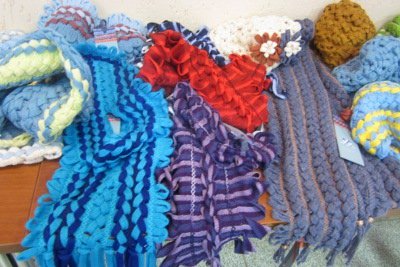
According to the fashion designer, this is a very simple invention. Its meaning lies in the fact that clothes are easily assembled and disassembled using modules. You can compare it with the usual “lightning” on clothes, only instead of cloves – loops.
“Modules are very different. At the edges, they have connecting “ears”, with the help of which they are connected to other modules loop to loop. Thus, we get the perfect transformer, practically a game, and in the end it will be a practical thing, ”said the fashion designer.
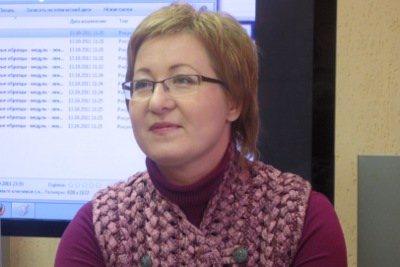
As I.Arsentyeva explained, in order to create seamless clothing, one does not need to have special education or any equipment. In addition, I. Arsentyeva noted that the creation of clothing from modules helps to develop fine motor skills, so it can also be used for medical purposes – to restore motor skills in people injured in accidents.
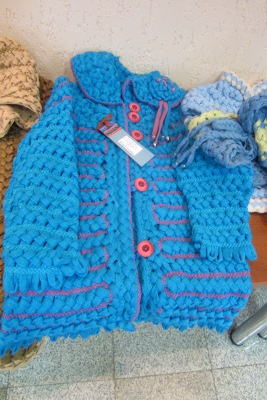
Two designers work together with the fashion designer – Olga Bolotova , who collects complex things, and Lyubov Nenasheva , who recently joined the process. The fashion designer and her assistants use wool and silk as the material.
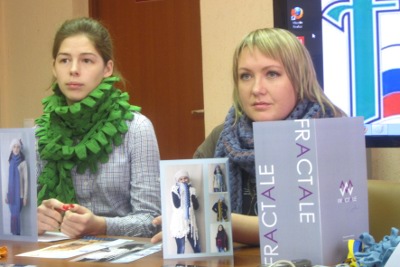
At the presentation, I. Arsenteva showed the two most commonly used modules – a tape and a diamond-shaped module. The last module is more complex and things from it are more structural.
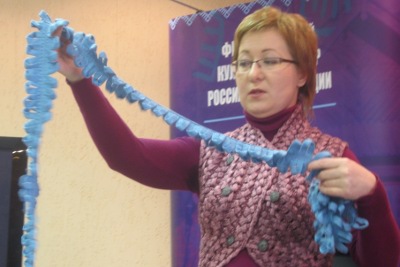
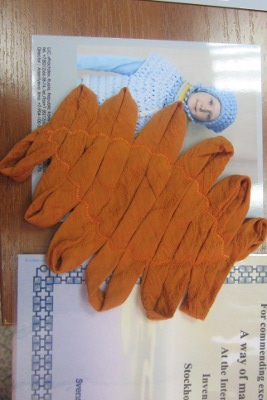
“So far, we do not have a machine that would make such modules professionally, but there is a prospect in this direction. The cost of such equipment is 700 thousand rubles,” the fashion designer said.
The production time, for example, for a jacket is 6-8 hours, and for a scarf – 20 minutes. The production time of the tape is 15 minutes, however, equipment is needed to create a high-quality rhomboid module.
The invention of I. Arsenteva has already visited the international exhibition-competition of inventions in Sweden, from where it returned with a silver medal. The fashion designer, by the way, has a Russian patent for a new method of seamless sewing.
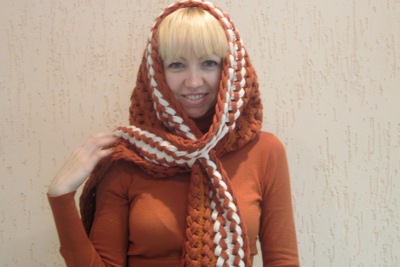
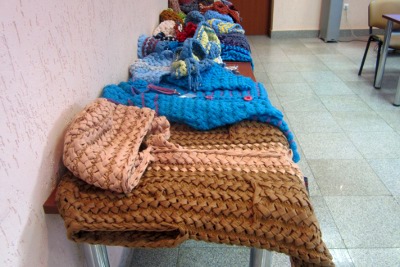
The inventor is going to launch two lines – an educational game and finished products assembled by designers at the factory. The first batch has already been sewn, but so far it appears only at exhibitions and showrooms. I.Arsenteva plans to open a branded store and its online counterpart, as well as to create a franchise sales system.
Prices for ready-made items vary depending on the size and complexity of the product. The KomiOnline correspondent examined the price tags on scarves, hats, sweaters and jackets and saw prices from 500 to 6000 rubles.
“We have a price reduction strategy. But the first product is unique, it is handmade, for those people who want to look exclusive and create their own image. Moreover, the cost of the product is now very high. But in the future, with an increase in the volume of the product, with the simplification of technology, the price should decrease,” I. Arsenteva said.
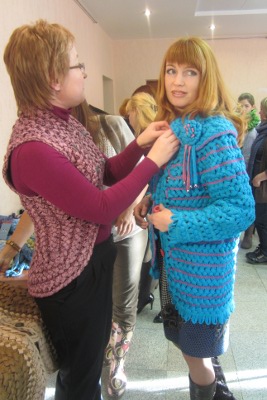
The invention itself, according to the fashion designer, appeared back in 2001. I.Arsenteva taught for 13 years at the Syktyvkar Technological College. Clothing designer. Precisely because the inventor taught modeling for so long, she began to forget the basics of design – the creation of patterns and cuts. In the end, I. Arsenteva set out to not use design at all.
“I started thinking about it. The modular creation of clothing was invented a long time ago, but they were connected with zippers, Velcro, buttons, ties. This hindered the development of this direction. It turns out that my inspiration was laziness,” I. Arsenteva explained.
Photo and video by Katerina Klepikovskaya
The world’s only textile constructor was presented in Syktyvkar
In the federal Finno-Ugric center today presented the invention of a professional fashion designer Irina Arsentieva. Journalists attacked the fashion designer long before the scheduled press conference. As a result of a spontaneous poll, to which the culprit of the event meekly agreed, the fashion designer’s wife, ethnofuturist artist Pavel Mikushev, who acts as a moderator at the event, had to save her from the hungry details of the “sharks of the pen.”
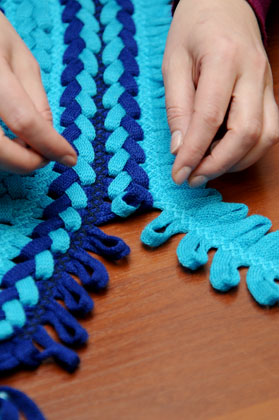
Photo by Kirill Zatrutin
The subject of the invention of Irina Arsentieva is a revived method of seamless design of clothing. According to Irina, since the Middle Ages, not a single tailor or fashion designer has thought of such a simple thing. The method was born back in 2001, but it was only introduced to the general public today.
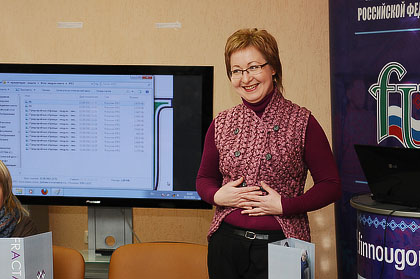
The reason was the victory of Irina Arsentieva at the International Invention Competition in Sweden. In the nomination “World around” she outperformed her competitors, winning a silver medal. The fashion designer from Taiwan became the gold medalist. True, according to Irina, his victory could be a “political step”: good relations with Asia are important for the Scandinavians. At least, the chairman of the jury, amazed by the ingenious simplicity of the invention, devoted much more time to the second-place winner than to the winner. The result of this communication, perhaps, will be the opening of a joint Komi-Swedish enterprise in the future. In the meantime, the Swede suggested to Irina one of the ways to use her invention.
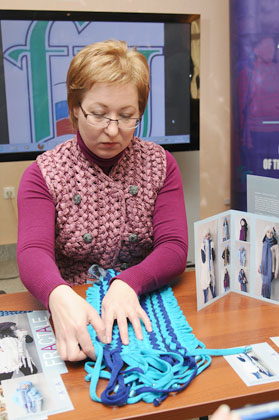
It lies in the healing and developmental function of making clothes, in addition to the utilitarian one. Thus, Arsentieva’s invention can be useful three times: to become an exclusive item of women’s wardrobe, to serve as a means of rehabilitation for people with weak motor skills as a result of an accident or an illness. Such patients can “weave” the future wardrobe, while still in a hospital bed. Thirdly, this is a great educational game for children – it develops spatial thinking and trains motor skills. In addition, visually impaired people can weave fashionable things.
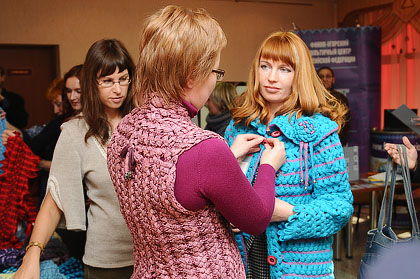
To create modular clothes, Irina was inspired, by her own admission, by laziness. For 13 years, the master taught fashion history, modeling and sketching at the Syktyvkar Technological College. One day, she discovered that she had begun to forget the technique of construction. Not wanting to return to patterns and measurements, she came up with the idea of fastening the details of clothing together with loops, while giving it the desired shape. So, you can build up a jacket with this technology in 6-8 hours, weave a simple scarf in 15 minutes. In order to dissolve the product, unlike Penelope, who spent the night on the destruction of the bound, the modular master spends from five minutes. After that, you can start creating a new thing from the same raw materials.
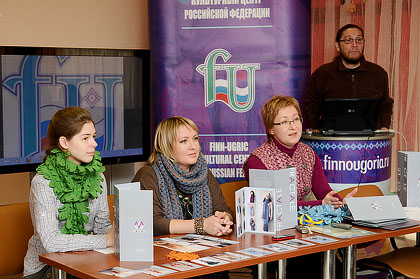
Raw materials Irina and her colleagues use exclusively domestic. True, he fears that he will have to go abroad for silk threads. She creates a fragment of a future product from a tape, which consists of 70 percent wool, using a machine stitch. In the future, he plans to abandon it. Further, the loops that make up the tape are threaded into one another and fixed along the bottom of the product with the ends of the tape, which turn into a decorative element. One of the male journalists compared the manufacturing technique to a “zip”.
– Yes, – the inventor was delighted, – this is really on the principle of “lightning”, only from textiles and made by hand.
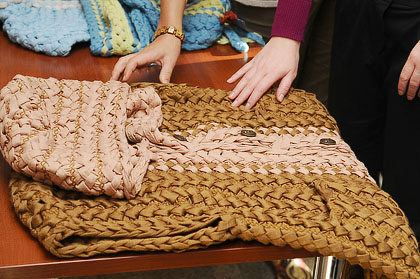
In addition to ribbons, the fashion designer uses diamond-shaped elements as designer parts. True, their production is a laborious process, so Irina saves all the proceeds from the sale of the exclusive for the purchase of a sewing machine. Its purchase will cost the inventor 700 thousand rubles.
She plans to open a branded and online store where it will be possible to purchase not only ready-made clothes, but also a do-it-yourself designer. The designer also plans to establish a franchise system.
Irina Arsentyeva is not afraid of “theft” of the technology, ingenious in its simplicity: she has already received a Russian patent and is now drawing up an international one.
– We would even be glad: in case of illegal borrowing of ideas, our legal protection will allow us to make good money on unlucky thieves.
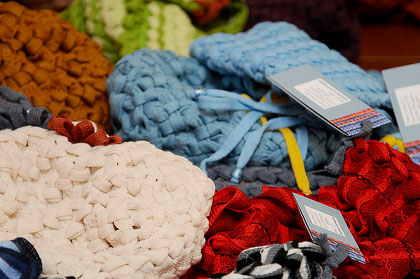
On the tables placed along the walls were presented things that could be bought right there. The journalists immediately began to try on vests, coats, berets, scarves and hoods. The opinions of potential buyers about prices ranging from five hundred to seven and a half thousand rubles diverged. Someone exclaimed: “How expensive!” Others were astounded by the low cost to handcraft. Still others simply muttered: “These are the prices …”. It was difficult to understand in this case whether they seem ridiculous or sky-high. The inventor herself was inclined to the fact that her things were a little expensive for local customers.
– But such is the strategy of the enterprise. Craftswomen have to learn in the process of creating clothes, it uses only manual labor. In the future, we will go to lower prices due to automated labor and new types of raw materials, – explained Arsentieva.
In addition, real connoisseurs, in her opinion, should be ready to pay for the possession of the only exclusive thing in the world. So far, the main part of Irina’s collection has remained in Sweden: the participants and guests of the invention competition have sold it with a bang.
FRACTALE, Russia


was used when creating this post
PROFILE
Irina Arsentieva is director of Fractale Komi Republic, Russia (2010). She taught fashion history, modeling and sketching at the Syktyvkar Technological College.
Main Research Source
- Сыктывкарку на изобретение нового способа шитья вдохновила лень (фото, видео) | Syktyvkar was inspired by laziness to invent a new way of sewing (photo, video) КомиОнлайн | KomiOnline(19/10/2011)

- Бесшовное шитье | Seamless sewing -Youtube(19/10/2011)
- В Сыктывкаре презентовали единственный в мире текстильный конструктор | The world's only textile constructor was presented in Syktyvkar BNKomi(19/10/2011)

